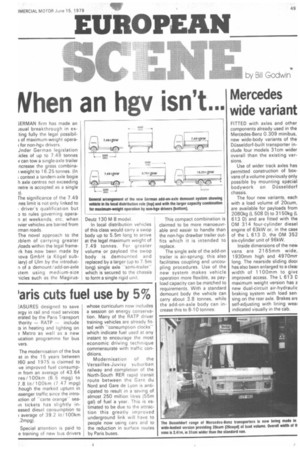When an hgv isn't...
Page 51

If you've noticed an error in this article please click here to report it so we can fix it.
;ERMAN firm has made an Jsual breakthrough in exting fully the legal possibil3 of maximum-weight opera' for non-hgv drivers.
Jnder German legislation ides of up to 7.49 tonnes v can tow a single-axle trailer ncrease the gross combineweight to 16.25 tonnes. (In context a tandem-axle bogie h axle centres not exceeding netre is accepted as a single a).
The significance of the 7.49 nes limit is not only linked to • driver's qualification but a to rules governing operan at weekends, etc, when 'vier vehicles are barred from rman roads.
The novel approach to the )blem of carrying greater (loads within the legal framerk has now been made by lova GmbH (a Kogel subiary) of Ulm by the introduc1 of a demount/add-on-axle item using medium-size licles such as the Magirus
Deutz 130 M 8 model.
In local distribution vehicles of this class would carry a swop body up to 5.5m long to arrive at the legal maximum weight of 7.49 tonnes. For greater volume or payload the swop body is demounted and replaced by a larger (up to 7.5m long) single axle "semi-trailer'' which is secured to the chassis to form a single rigid unit. This compact combination is claimed to be more manoeuvrable and easier to handle than the non-hgv drawbar trailer outfits which it is intended to replace.
The single axle of the add-on trailer is air-sprung; this also facilitates coupling and uncoupling procedures. Use of the new system makes vehicle operation more flexible, as payload capacity can be matched to requirements. With a standard demount body the vehicle can carry about 3.8 tonnes, while the add-on-axle body can increase this to 8-10 tonnes-.




























































































































